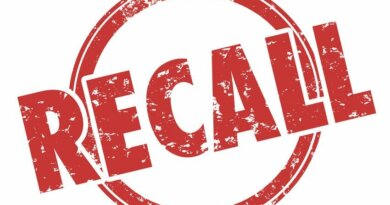Pfizer Seeks COVID Vaccine OK As Roll Out Planned
Nov. 20, 2020 — American pharmaceutical company Pfizer, and its German partner BioNTech, said Friday they had submittted for approval an application for an experimental coronavirus vaccine.
But don’t start standing in line yet for a shot.
If the FDA does grant emergency use authorization to Pfizer, a coronavirus vaccine would be rolled out in phases. Some Americans might not get it until mid-2021.
An FDA advisory committee is scheduled to meet Dec. 8-10 and could discuss both the Pfizer vaccine and one produced by Moderna, which has also said it plans to apply for emergency use authorization. Both are two-shot vaccines.
If the committee approves Pfizer’s vaccine, distribution could begin within 24 hours. The Pfizer vaccine has already been manufactured under a $1.95 billion contract with the government. And some states have already made plans for how to distribute the vaccine.
Who Gets the Vaccine First?
The CDC’s Advisory Committee on Immunization Practices will decide on distribution. USA Today reported that the National Academies of Sciences, Engineering, and Medicine advised the CDC on priorities. Those priorities are:
-
Phase I, part I: Frontline health care, ambulance drivers, cleaners, and first responders. This is about 5% of the U.S. population. -
Phase I, part II: People with serious conditions like cancer and heart disease that puts them at a significantly higher risk of serious infection or death, as well as people over 65 in group living facilities such as nursing homes, homeless shelters, and prisons. That’s about 10% of the population. -
Phase II: Everybody else over 65, teachers, child care workers, people with health conditions putting them at moderate risk, people under 65 in detention centers and people who work there, and critical workers who can’t avoid exposure to COVID-19, such as public transit employees or food supply workers. That’s 30% to 35% of the population. -
Phase III: Younger adults and people working in higher education, hotels, banks, exercise facilities, and factories. That’s 40% to 45% of the population. It’s unclear if children would be included in this group, USA Today said. -
Phase IV: People who didn’t fit into any other phases — 5% to 15% of the population.
A timetable hasn’t been published, but Anthony Fauci, MD, director of the National Institute of Allergy and Infectious Diseases and the nation’s COVID authority, recently said a coronavirus vaccine should be available to the general public sometime from April to July.
Speed is crucial. While the government makes decisions, the coronavirus will continue to sicken Americans and stifle the national economy.
The United States recorded its 250,000th coronavirus-related death this week and has marked 11.5 million cases since the pandemic started — more than any other nation. On Thursday, the United States recorded 170,161 new confirmed cases and 2,000 deaths.
States on the Clock
Under President Donald Trump’s policy of letting states set their own policies for battling the COVID pandemic, the states would also be responsible for vaccine distribution. Some of them have already described plans.
In Ohio, Gov. Mike DeWine announced 10 sites across the state that will receive the vaccine once the FDA grants emergency use authorization, he said in a news release.
“Ohio will first vaccinate those who are most at risk, including those who work in long-term care facilities, nursing homes, and other congregate-care facilities, high-risk health care workers, and first responders,” the release said.
In Minnesota, the Mayo Clinic says it’s ready to start vaccinations in late December, according to the Twin Cities Pioneer Press.
“We’re very confident that we will have at least one vaccine by the end of the year for at least a small, targeted population, which hasn’t been decided yet,” Melanie Swift, MD, said this week.
Pfizer’s vaccine would be the first approved for use in the United States. Clinical trials show the two-shot vaccine was 95% effective in preventing infections, the company said in a news release.
“Our work to deliver a safe and effective vaccine has never been more urgent, as we continue to see an alarming rise in the number of cases of COVID-19 globally,” Albert Bourla, PhD, Pfizer chairman and CEO, said in the release.
The company is also submitting “rolling submissions” for approval from government agencies around the world.
Others Also on the Way
Other vaccines may hit the market soon. Moderna said its vaccine shows about 95% efficacy. AstraZeneca and Johnson & Johnson are in the late stages of their vaccine clinical trials.
An emergency use authorization, or EUA, is not the same as full approval. An EUA allows a drug to be made available during a health crisis before all testing is completed.
Normally, it takes years to develop a vaccine, but the severity of the coronavirus pandemic caused the government to fast-track the process.
EUAs can be withdrawn, as happened earlier this year when researchers found the antimalarial drug Hydroxychloroquine didn’t help people who had the coronavirus.
Because of high interest in the vaccine, the FDA said this week that it will make the EUA process open to the public.
“Today’s transparency action is just one of a number of steps we are taking to ensure public confidence in our EUA review process for drugs and biological products, especially any potential COVID-19 vaccines,” FDA Commissioner Stephen Hahn, MD, said in a statement.





Some truly prime content on this website , saved to favorites.
Great blog you have here but I was curious about if you knew of any forums that cover the same topics talked about in this article? I’d really love to be a part of online community where I can get responses from other experienced individuals that share the same interest. If you have any suggestions, please let me know. Thank you!
Those are yours alright! . We at least need to get these people stealing images to start blogging! They probably just did a image search and grabbed them. They look good though!
Enjoyed examining this, very good stuff, thanks. “Talk sense to a fool and he calls you foolish.” by Euripides.